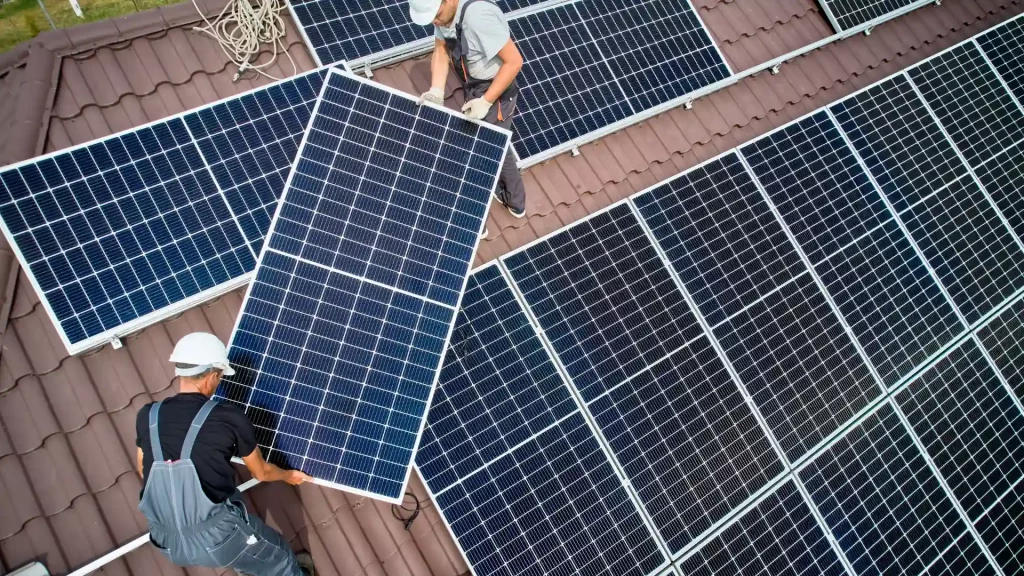The report, titled “Renewable Power Generation Costs in 2022,” calculates that the new installation of renewable energy in 2022 has caused a saving of at least $520 billion in the electricity sector’s fuel costs
According to a recent report from the International Renewable Energy Agency (IRENA), an impressive 86% (187 GW) of newly installed renewable energy capacity in 2022 had lower costs than electricity from fossil fuels. The ongoing shock in fossil fuel prices has greatly bolstered the competitiveness of renewable energy, leading to an enormous $520 billion reduction in global power sector costs in 2022.
The report, titled “Renewable Power Generation Costs in 2022,” calculates that the new installation of renewable energy in 2022 has caused a saving of at least $520 billion in the electricity sector’s fuel costs. This is larger than the economy of Singapore. Additionally, in non-OECD countries, the savings in 2022 alone are estimated to be around $580 billion.
According to IRENA Director-General Francesco LaCamera, “IRENA sees 2022 as a veritable turning point in the deployment for renewables as its cost-competitiveness has never been greater despite the lingering commodity and equipment cost inflation around the world. The most affected regions by the historic price shock were remarkably resilient, in large part thanks to the massive increase of solar and wind in the last decade.”
Proof that sustainability does not have to come at the cost of profitability
This data underlines the fact that over the past 13 to 15 years, the cost of generating renewable energy from solar and wind has constantly and consistently been on a downward trend. Between 2010 and 2022, solar and wind power became very competitively priced compared to fossil fuels, even without financial subsidies from governments. The report also highlights that China played an absolutely crucial role in driving down the global costs of solar and onshore wind energy, emphasizing that the global green transition needs all major players to be on board, regardless of strategic imperatives.
On a global scale, the average cost of electricity from solar photovoltaic (PV) systems decreased sharply by 89%, reaching just $0.049 per kilowatt-hour (kWh). This cost is nearly one-third lower than the cheapest fossil fuel option globally. Similarly, onshore wind energy costs were reduced by 69% to $0.033 per kWh in 2022, which is slightly less than half the cost of the least expensive fossil fuel-based option for that year. The report further anticipates that the continuing increase in fossil fuel prices due to international events will spur a structural shift towards renewable energy as the most economically viable source of electricity.
Beyond just the direct cost savings, the report also highlighted that there were tremendous other social benefits from the surge in renewable capacity, such as reduced healthcare costs from lower carbon emissions and particulates, increased supply chain stability from lower reliance on fossil fuels, and the productivity growth from innovating in new technologies. The true benefits to society are enormous, and while extremely difficult to precisely gauge, probably exceeded a trillion dollars.
Renewable energy also buffers consumers from sudden spikes in fossil fuel prices, prevents physical supply shortages, and improves energy security. The adoption of renewable energy over the past two decades has played an essential role in mitigating the economic disruption from the 2022 fossil fuel price shock. Without renewables, the impact could have been far more severe, exceeding the capacity of most governments to handle.
However, a lot more needs to be done
To meet the goals of the Paris Agreement, global investment in the energy transition must exceed $5 trillion just this year and consistently increase by an additional $5 trillion each year until 2030, truly massive amounts in an already tight credit market. In 2022, investments were a mere $1.3 trillion.
The world must continue to add an average of 1TW of renewable power annually until 2030 to maintain the 1.5°C warming target outlined in the Paris Agreement. This is more than three times the global capacity growth witnessed in 2022, and governments need to drastically increase the tempo of investment if the planet is ever to be saved.
In related news, the United Nations General Assembly passed a resolution designating January 26, the anniversary of IRENA’s founding, as the ‘International Day of Clean Energy’ to raise awareness and policy discussion about the green transition.
